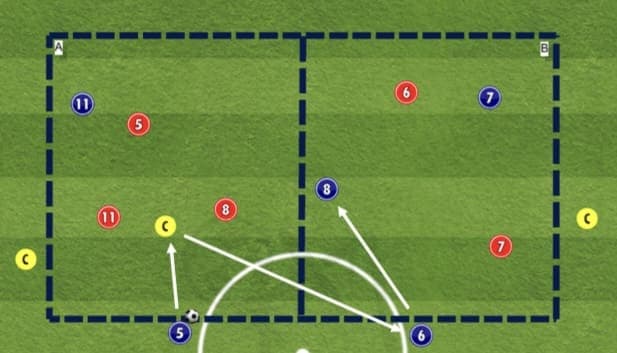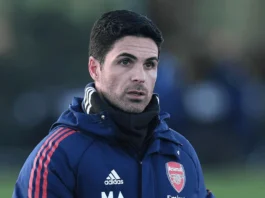
Possession of the ball has become a crucial element of contemporary football. Teams that excel in possession are often able to dominate the game, create scoring opportunities, and ultimately achieve success on the pitch. In this article, we will delve into the significance of possession in football and how teams can effectively train and utilize it to their advantage.
The Significance of Possession
Possession is more than just keeping the ball. It is about controlling the game, dictating the tempo, and forcing the opposition to react to your actions. Possession allows teams to build attacks patiently, probe the opposition’s defense, and create scoring opportunities. It also helps in defending, as the team in possession can limit the opponent’s chances by denying them the ball.
Possession-based football is often associated with teams that prioritize passing, movement, and fluidity. By maintaining possession, teams can tire out their opponents, create gaps in their defense, and exploit scoring opportunities. Possession-based teams also tend to have better control over the game and can limit the opposition’s chances to counterattack.
Also read: Just A Few Weeks Until Manchester United Vs Liverpool: Match Preview
Possession-Oriented Training
Training plays a crucial role in developing a team’s ability to maintain possession. Coaches need to create exercises and drills that simulate game situations, focusing on decision-making, passing accuracy, and movement off the ball. These training sessions should encourage players to think quickly, identify open spaces, and make the right choices in possession.
One effective exercise is the “Positioning Game.” In this exercise, players are divided into two teams and play in a limited space. The objective is to keep possession and create scoring opportunities by moving the ball quickly. This exercise helps players develop their awareness of open spaces, improve passing accuracy, and enhance their decision-making abilities.

The team in possession (the blues) is arranged with the 5 and 6 who are the central defenders and are outside the field. The number 8-11-7 are the three midfielders inside the rectangle. The 3 wildcards (in yellow) two of which are outside the rectangle in amplitude, represent the full-back. The third is a midfielder who always plays with the team in possession of the ball. During the unfolding a 5+3 v 5 is created. Players have two taps at their disposal and aim to move the ball quickly by recognising the free players and space to occupy
When the reds intercept and win the ball, they have to play it at one of the three wildcards (yellows). The 5 and 6 reds take the position of the 5 and 6 Blue entering space creating the same previous situation.

Another valuable training exercise is the “Construction and Development” drill. This exercise focuses on building attacks from the back and developing possession in the attacking third. Players must work together to move the ball forward, create passing angles, and exploit spaces in the opposition’s defence. This drill helps players improve their ability to combine, find gaps in the defence, and create scoring opportunities.
The Role of Strategy in Possession
While possession is essential, strategy plays a vital role in a team’s ability to effectively utilize possession. Coaches must analyze the opposition, identify their weaknesses, and develop a game plan that maximizes their team’s possession-based style of play. This includes deciding on the positioning of players, the tempo of play, and the areas of focus during possession.
The choice of strategy can vary depending on the opponents and the game situation. For example, a team may choose to press high and aggressively when the opposition is trying to build from the back. This strategy aims to disrupt the opponent’s possession and create scoring opportunities through turnovers. Alternatively, a team may opt for a more patient and possession-focused approach when facing a defensively organized opponent.
Analyzing Matches and Data
Video analysis and data play a significant role in understanding the strengths and weaknesses of both the team and the opposition. Coaches must carefully analyze matches, identify patterns of play, and extract valuable insights that can inform their game plan. Video meetings with the team are essential for conveying information, making tactical adjustments, and improving the team’s understanding of possession-based strategies.
Statistical data can also provide valuable insights into a team’s possession performance. Metrics such as pass completion rate, possession time, and territorial dominance can help coaches evaluate the effectiveness of their possession-based approach. These data points can also highlight areas for improvement and guide training sessions aimed at enhancing possession skills.
Case Study: Ukraine’s Possession-based Approach


To illustrate the importance of possession and strategy, let’s examine the case of the Ukrainian national team. Under the guidance of coach Andrea Maldera, Ukraine developed a possession-based style of play that focused on control, fluidity, and creative attacking movements.
Also read: Tottenham’s Transfer Strategy For Summer Striking Revamp.


In matches against Finland and Switzerland, Ukraine employed a 1-3-4-1-2 formation to adapt to the opposition’s defensive strategies. The team showcased their ability to press high, disrupt the opponent’s possession, and create positive transitions. In the offensive phase, Ukraine emphasized building from the back, exploiting spaces in the opposition’s defense, and utilizing their attacking players’ movement and positioning.


Through careful analysis, training, and game plan implementation, Ukraine demonstrated the effectiveness of a possession-based approach. Their understanding of game principles, strategic choices, and training methods allowed them to control matches, create scoring opportunities, and achieve positive results.
Conclusion
Andrea Maldera, the assistant coach of Brighton, believes that possession is a fundamental aspect of modern football. Teams that excel in possession can control the game, create scoring opportunities, and limit the opposition’s chances. Effective possession-oriented training, strategic decision-making, and analysis of matches and data are crucial in developing and implementing a successful possession-based approach. By prioritizing possession, teams can enhance their chances of success and achieve their goals on the pitch.












